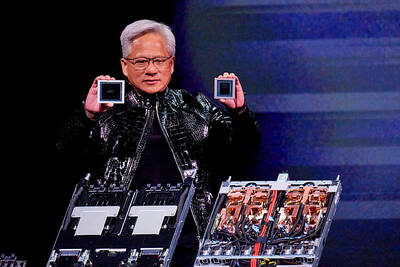Formosa Ha Tinh Steel Corp (台塑河靜鋼鐵興業) is to study the feasibility of building a third furnace to expand production, the Ha Tinh, Vietnam-based firm said on Monday.
Demand for steel from the Southeast Asian market has been strong, prompting the company to mull the possibility of expansion, chairman Chen Yuan-cheng (陳源成) told reporters.
However, whether it follows through on the idea depends on its shareholders and on whether the Vietnamese government would support the plan, Chen added.
Formosa Ha Tinh Steel’s second furnace, located in the Vung Ang Economic Zone of Ha Tinh Province, started operations on May 18, while the first furnace became operational on May 29 last year.
Chen said that the first furnace rolled out about 1.6 million tonnes of molten iron last year, while the second furnace, which is operating at 95 percent, is expected to produce 5 million tonnes this year, generating US$2.5 billion in sales.
Production from the second furnace this year is expected to boost economic growth in Vietnam by 1.27 percentage points, up from 0.45 percentage points last year, according to an estimate by Formosa Plastics Group (FPG, 台塑集團).
The group, which is the largest shareholder in the Ha Tinh Steel venture, owns a 70 percent stake, while China Steel Corp (中鋼) holds a 25 percent stake and Japan’s JFE Steel Corp 5 percent.
The shareholders have invested more than US$10 billion in the steel mill, making it the largest foreign investment in Vietnam.
A feasibility plan would be conducted on the third furnace by next year at the earliest, given US-China trade tensions, and other factors, Chen said.

Nvidia Corp chief executive officer Jensen Huang (黃仁勳) on Monday introduced the company’s latest supercomputer platform, featuring six new chips made by Taiwan Semiconductor Manufacturing Co (TSMC, 台積電), saying that it is now “in full production.” “If Vera Rubin is going to be in time for this year, it must be in production by now, and so, today I can tell you that Vera Rubin is in full production,” Huang said during his keynote speech at CES in Las Vegas. The rollout of six concurrent chips for Vera Rubin — the company’s next-generation artificial intelligence (AI) computing platform — marks a strategic

Enhanced tax credits that have helped reduce the cost of health insurance for the vast majority of US Affordable Care Act enrollees expired on Jan.1, cementing higher health costs for millions of Americans at the start of the new year. Democrats forced a 43-day US government shutdown over the issue. Moderate Republicans called for a solution to save their political aspirations this year. US President Donald Trump floated a way out, only to back off after conservative backlash. In the end, no one’s efforts were enough to save the subsidies before their expiration date. A US House of Representatives vote

Shares in Taiwan closed at a new high yesterday, the first trading day of the new year, as contract chipmaker Taiwan Semiconductor Manufacturing Co (TSMC, 台積電) continued to break records amid an artificial intelligence (AI) boom, dealers said. The TAIEX closed up 386.21 points, or 1.33 percent, at 29,349.81, with turnover totaling NT$648.844 billion (US$20.65 billion). “Judging from a stronger Taiwan dollar against the US dollar, I think foreign institutional investors returned from the holidays and brought funds into the local market,” Concord Securities Co (康和證券) analyst Kerry Huang (黃志祺) said. “Foreign investors just rebuilt their positions with TSMC as their top target,

REVENUE PERFORMANCE: Cloud and network products, and electronic components saw strong increases, while smart consumer electronics and computing products fell Hon Hai Precision Industry Co (鴻海精密) yesterday posted 26.51 percent quarterly growth in revenue for last quarter to NT$2.6 trillion (US$82.44 billion), the strongest on record for the period and above expectations, but the company forecast a slight revenue dip this quarter due to seasonal factors. On an annual basis, revenue last quarter grew 22.07 percent, the company said. Analysts on average estimated about NT$2.4 trillion increase. Hon Hai, which assembles servers for Nvidia Corp and iPhones for Apple Inc, is expanding its capacity in the US, adding artificial intelligence (AI) server production in Wisconsin and Texas, where it operates established campuses. This